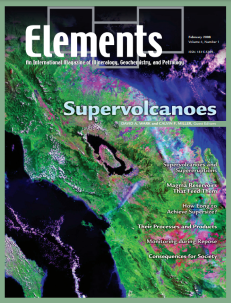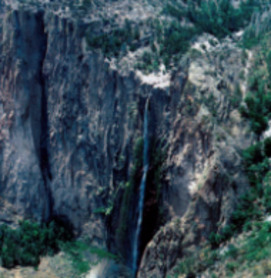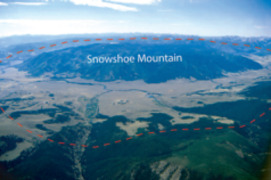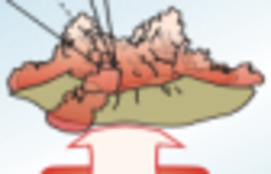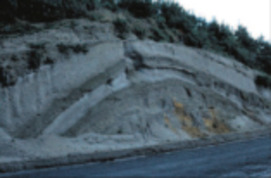
Supervolcanoes
David A. Wark and Calvin F. Miller – Guest Editors
Table of Contents
Explosive super-eruptions from large- volume, shallow magma systems lead to enormous and devastating pyroclastic flows, the formation of gigantic collapse calderas, and deposition of volcanic ash over continent-sized areas. Recognition that future eruptions from these “super- volcanoes” will undoubtedly have severe impacts on society—and perhaps on life itself—has led to recent public and media interest. Should we be con- cerned about an imminent super-erup- tion? The answer to this question requires an understanding of past erup- tion events. In this issue, geoscientists investigating ancient supervolcanoes provide insight into the processes and the time required to generate large vol- umes of eruptible magma, the monitor- ing of a youthful system, and super- eruption processes and consequences.
Supervolcanoes and Their Explosive Supereruptions
The Magma Reservoirs That Feed Supereruptions
How Long Does It Take to Supersize an Eruption?
Supereruptions and Supervolcanoes: Processes and Products
Monitoring a Supervolcano in Repose: Heat and Volatile Flux at the Yellowstone Caldera
Consequences of Explosive Supereruptions
- Supervolcanoes and Metallic Ore Deposits
- “Fizzics” of Bubble Growth in Beer and Champagne
American Geophysical Union
Australian Scientific Instruments
CAMECA
Excalibur Mineral Corporation
Hudson Institute of Mineralogy
Meiji Techno America
Rigaku
RockWare
Thermo Scientific
v4n2 Phosphates and Global Sustainability
Guest editor: Eugenia Valsami-Jones (The Natural History Museum) and Eric H. Oelkers (LMTG-Université de Toulouse)
Phosphorus is a unique element: it is essential to the existence of all living forms, and as such controls biological productivity in many terrestrial and marine envi- ronments; but when in excess, it leads to uncontrollable biological growth and water-quality problems. This has become a common environmental issue, result- ing from our careless use of phosphorus in agriculture, yet phosphate ore deposits, from which fertilizers are produced, are a finite natural resource. Understanding the properties of phosphate minerals may hold the key to protecting the future of this resource. Phosphate minerals are also of extreme importance in biomineral- ization and could be the future hosts of nuclear waste. Despite all this, mineralo- gists and geochemists have invested little time understanding phosphate mineral stability, reactivity, and transformations, and this issue attempts to bring phos- phates to the forefront of our scientific endeavors.
Phosphate Mineral Reactivity and Global Sustainability Eric H. Oelkers (LMTG-Université de Toulouse) and Eugenia Valsami-Jones (The Natural History Museum)
The Global Phosphorus Cycle: Past, Present, and Future Gabriel M. Filippelli (Indiana University Purdue University)
Bone and Tooth Mineralization: Why Apatite? Jill D. Pasteris (Washington University), Brigitte Wopenka (Washington University), and Eugenia Valsami-Jones (The Natural History Museum)
Phosphate Minerals, Environmental Pollution and Sustainable Agriculture David A.C. Manning (Newcastle University)
Phosphorus Removal and Recovery from Municipal Wastewaters Simon A. Parsons and Jennifer A. Smith (Cranfield University)
Phosphates and Nuclear Waste Storage Eric H. Oelkers (LMTG-Université de Toulouse) and Jean-Marc Montel (LMTG-Université de Toulouse)
- Supervolcanoes (February 2008)
- Phosphates and Global Sustainability (April 2008)
- Deep Earth and Mineral Physics (June 2008)
- Platinum-Group Elements (August 2008)
- Carbon Dioxide Sequestration (October 2008)
- Nanogeoscience (December 2008)
Download 2008 Thematic Preview


